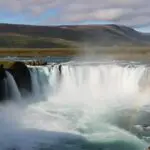There were a few naval battles around Iceland during WWII, with a few Icelandic fishing vessels sunk by German submarines. Iceland’s strategic location also allowed the British fleet to finally sink the German battleship, Bismarck.
Iceland was a neutral country during WWII, but its strategic location in the North Atlantic made it a valuable target for the Allies and the Axis powers. To prevent a German takeover, the Allies occupied Iceland in 1940 and established several military bases. This presence was critical in defending the North Atlantic, safeguarding transatlantic shipping lanes, and significantly impacting the local economy and society.
This is our second blog on Iceland in World War II. Iceland in World War II – How it Began is the first one.
The Icelandic Fishing Fleet
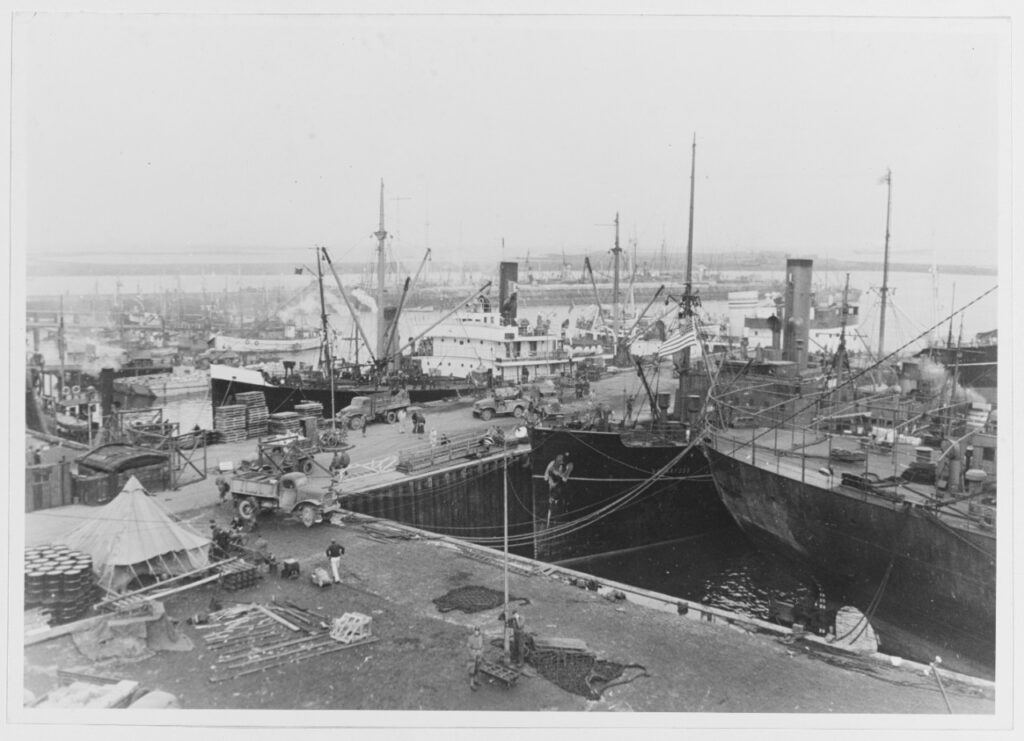
The Icelandic fishing fleet was not in good shape after the Great Depression. The ships were all old, in dire need of maintenance, and in overall bad condition.
Despite many casualties on Icelandic ships during WWII, there was a time of great opportunity because there was a shortage of seafood in the British Isles, and Icelanders received high prices for fish. Similarly, the Allies needed reliable transport routes for their forces in Iceland, so sea transport could generate a lot of revenue.
As a result, Icelandic shipping companies attempted to keep their ships at sea for as long as possible, even if they were worn out, lacked maintenance, or there was bad weather. It is worth noting that the Great Depression was one of the primary reasons why the fishing fleet was so old. Many fishing companies had found it difficult to devote sufficient attention to maintenance and renewal. That resulted in problems when ill-equipped vessels were involved in military conflicts. Obviously, it is impossible to say that Icelandic ships took part in naval battles around Iceland as they were fully unarmed. But despite the precautions fishermen could take, many were killed.
Fishermen Believed in Neutrality
Icelandic ships assumed the country’s neutrality would protect them from attack and always flew the Icelandic flag. Furthermore, the flag was painted on the sides of the vessels and illuminated at night to draw attention to the ship’s nationality.
German submarines posed a great threat to Icelanders, sinking eight Icelandic ships during the war. They also sank three foreign charter ships in Eimskip’s service. One boat was also known to have been sunk by a torpedo.
The Germans had declared an exclusion zone around the British Isles at the start of the war to force the British to surrender. Additionally, they had a restricted area around Iceland after the occupation. They launched massive attacks with ships, planes, and mostly submarines on ships in this area, obstructing supplies from reaching the country. They also started laying torpedoes near known shipping lanes to cause as much disruption as possible.
The submarines had cannons and machine guns, but the most dangerous weapons were torpedoes that could be fired from an ambush. Torpedoes occasionally failed, especially early in the war when many missiles were defective and did not hit the target. As a result, submarine commanders frequently resorted to attacking ships from above the sea with cannons. This attack method was used, especially if they intended to sink small fishing vessels.
German submarine warfare was most effective when they attacked shipping convoys in wolfpacks. The wolf packs tore apart the convoys’ defenses under the command of experienced and aggressive submarine commanders such as Erich Topps and Otto Kretschmer.
German Submarine Attacks
During World War II, German submarines attacked Icelandic fishing vessels operating in the North Atlantic. These attacks were part of a larger campaign by the German navy to disrupt Allied shipping lanes. They were a significant threat to Iceland’s fishing industry, a primary source of food and income for the country.
The first known attack on an Icelandic fishing vessel occurred in 1941, with several more incidents throughout the war. In total, several dozen Icelandic fishing boats were sunk or damaged by German mines or submarines, causing loss of life and property.
The Icelandic government protested the attacks and demanded that the Allies take measures to protect their fishing vessels. In response, the Allies established convoy systems for Icelandic boats. It provided them with escorts, which reduced the threat from German submarines.
The attacks on Icelandic fishing vessels were a reminder of the dangers faced by neutral countries during the war and the importance of protecting shipping lanes. They also significantly impacted Iceland’s economy and its relationship with the Allies.
Fróði ÍS 454 – The First Known Submarine Attack
Following an attack by a German submarine, the first Icelandic ship arrived at the port in The Westman Islands on March 11, 1941. Five members of the crew of the Fróði ÍS 454 had died, and the ship had been severely damaged. In fact, it appears that only the submarine commander Eitel-Friedrich Kentrats on the submarine U-74’s fear that Fróði was being used as bait in a trap saved the ship. Kentrat withdrew from the attack at daybreak after only an hour of shooting.
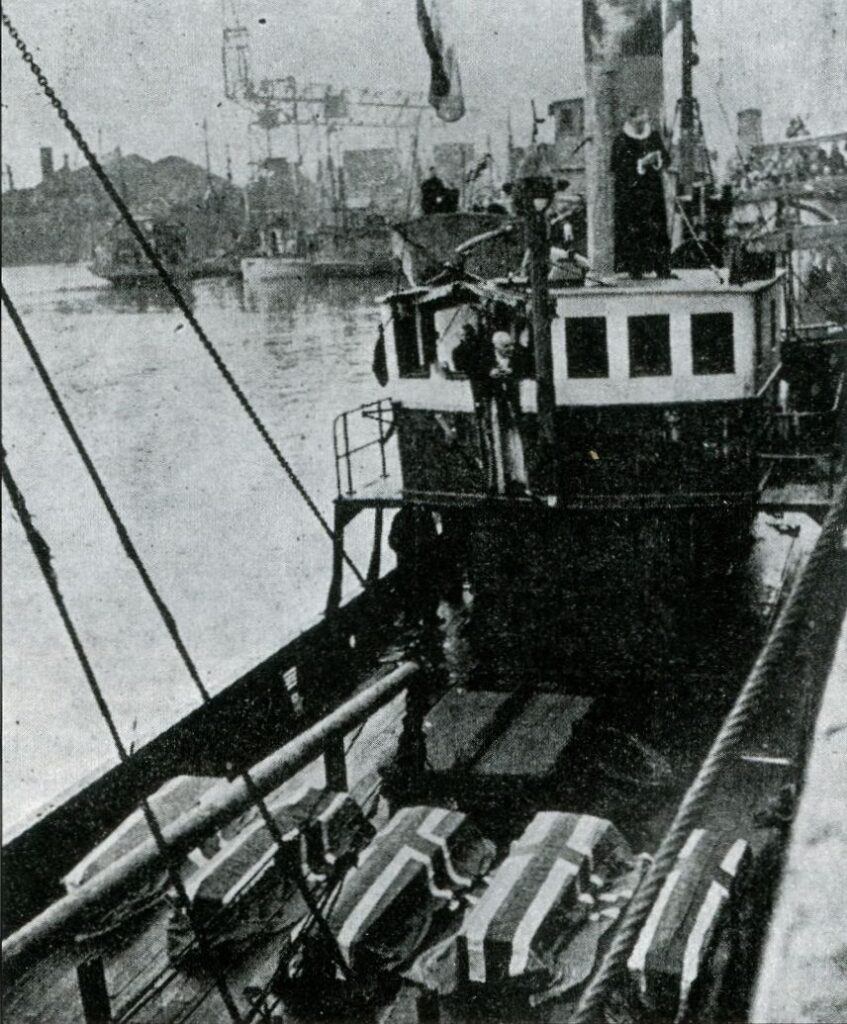
Fróði was transporting fish and was operated out of Ísafjörður, West Fjords, and the crew mainly from there. It was fully loaded with fish on its way to England when it was attacked, about 200 nautical miles south-southeast of the Westman Islands. It was Kentrats’ first attack.
Other Fishing Boats Sank at a Similar Time
The trawler Reykjaborg RE 64 was declared missing a few days later. It was supposed to have arrived in England on March 13, but that day came and went without any news. Crewmembers of another ship had seen a life raft about 170 nautical miles northeast of St. Kilda. It was empty but had obviously been shot at. The crew of Reykjaborg, 15 men from Reykjavík, were declared missing. Reykjaborg had been one of the Icelandic fishing fleet’s biggest, newest, and best trawlers.
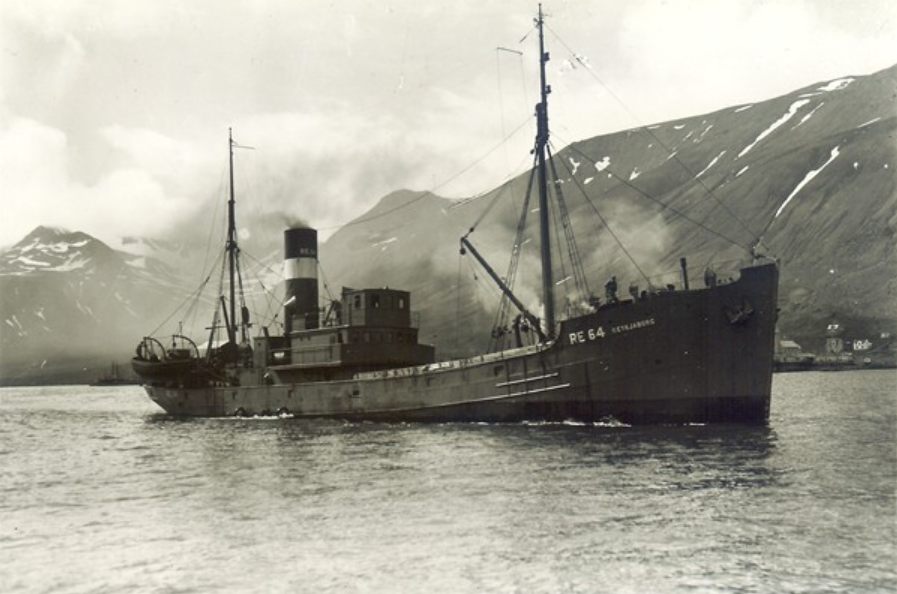
On March 20, the British Generalship told Reykjaborg’s manager that two crewmembers had been found alive in a lifeboat. The third man who was with them had perished. Later it came to light they had been attacked on March 10, the day before Fróði. When they were found, they had been floating for four days. Later it turned out that most of the food supplies had been ruined and uneatable.
The U-552 submarine, under the command of Erich Topp, had attacked Reykjaborg. Topp’s reports on the attack were saved, showing the raid in great detail. However, researchers think Topp hadn’t realized that he was shooting at an unarmed Icelandic trawler. U-552 was nicknamed the Roter Teufel (“Red Devil”) after her mascot of a grinning devil, painted on the conning tower.
Another fish-transporting ship was sunk at around that time. Pjetursey had left The Westman Islands on March 10, but it wasn’t until September that scraps of the ship were found. U-37, under the command of Asmus Nicolai Clausen, attacked the boat on the evening of March 12. All 10 crew members died.
About 200 Icelanders died because of WWII.
159 Icelanders were undoubtedly killed in some way because of the war. 130 died because of submarine and aircraft attacks on ships, and three as a result of a torpedo. Then 20 people died because of clashes that can be attributed to the precautions taken due to the war. Six people died because of war-related causes. Furthermore, it is unclear whether 70 people who died aboard ships died because of the war. That means that the war may have killed up to 229 Icelanders. This, however, has not been thoroughly researched.
Just over 120 thousand people lived in Iceland in 1940, which means that about 0.13-0.19% of the nation died because of the war. It is interesting to look at these figures in comparison with the relative casualties of other countries. Rough figures for comparison show that the United States lost about 0.2% of its total population during the war, Canada lost 0.4%, Great Britain lost 0.7%, and France 1.5%. Norwegians lost about 0.34% of their people because of the war; of those, about 0.12% died at sea.
The Attack on Bismarck
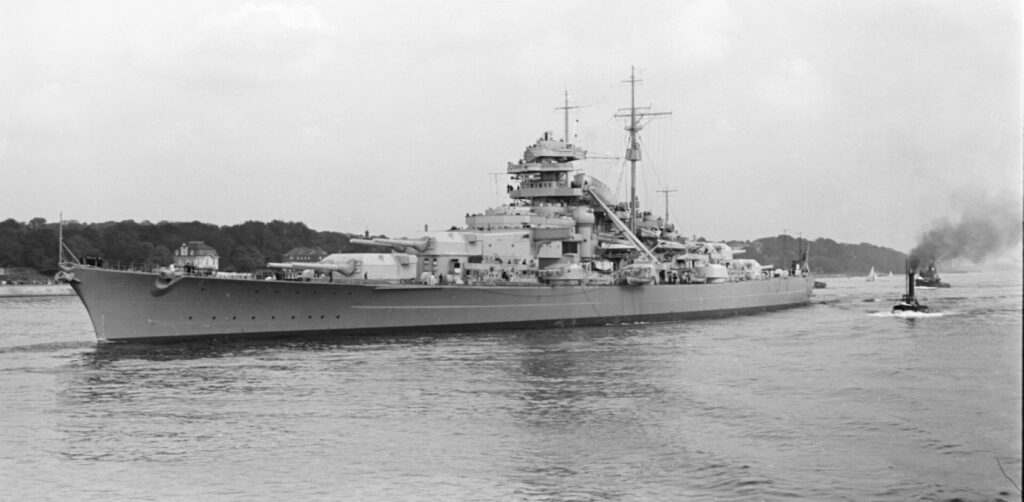
The attack on the German battleship Bismarck was one of the largest naval battles around Iceland during World War II.
Some say that Icelanders could hear the shockwaves of the bombing all the way to Reykjavik. But that is very unlikely as the battle occurred halfway between Cape Farewell on Greenland and the Reykjanes Peninsula.
The attack occurred on May 27, 1941, and was a critical moment in the Battle of the Atlantic. The British Royal Navy had been pursuing the Bismarck, which was one of the largest and most powerful battleships in the German fleet, after it sank the British battlecruiser, Hood. The attack occurred in the North Atlantic, outside of Iceland, when British ships finally caught up to Bismarck. When it sank, HMS Hood had been on its way to Hvalfjörður in Iceland from the Orkney Islands. Only three men out of a crew of 1418 survived.
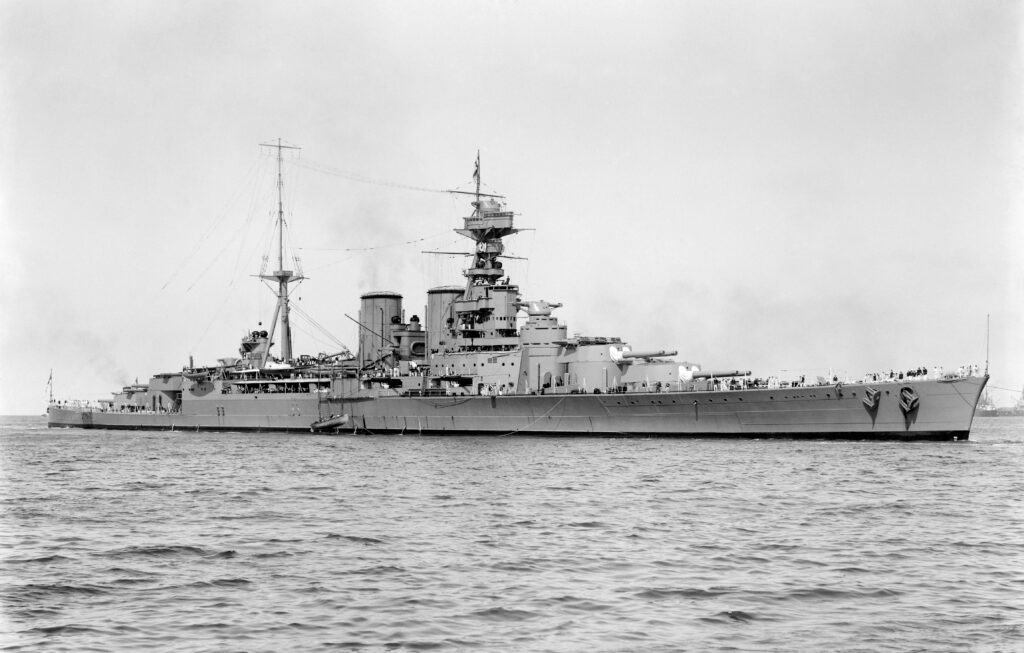
Retaliation of the British Navy
The British launched a coordinated attack on Bismarck with several ships. King George V and Rodney were two of them, and several cruisers and destroyers. The attack was intense, with both sides exchanging heavy fire. The Bismarck was heavily damaged in the engagement, with several of its guns being disabled and its steering gear damaged. Despite the damage, Bismarck was able to continue their voyage. It was eventually sunk a few days later by the British.
The attack on Bismarck was a significant victory for the British. It effectively removed one of the German fleet’s largest and most powerful warships from the battle. It was also seen as a turning point in the Battle of the Atlantic. The loss of the Bismarck was a significant blow to German naval power and helped establish British control of the Atlantic shipping lanes. The attack remains an essential moment in naval history. It is often remembered as one of the key engagements of World War II.
Sources: Stríðsárin 1939-1945 by Páll Baldvin Baldvinsson and visindavefuri.is


